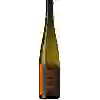
Winery Les BeatesTerra d'Or Cuvée Vieilles Vignes Rouge
This wine is a blend of 3 varietals which are the Cabernet-Sauvignon, the Syrah and the Grenache noir.
In the mouth this red wine is a powerful with a nice balance between acidity and tannins.
This wine generally goes well with poultry, beef or game (deer, venison).
Taste structure of the Terra d'Or Cuvée Vieilles Vignes Rouge from the Winery Les Beates
Light | Bold | |
Smooth | Tannic | |
Dry | Sweet | |
Soft | Acidic |
In the mouth the Terra d'Or Cuvée Vieilles Vignes Rouge of Winery Les Beates in the region of Provence is a powerful with a nice balance between acidity and tannins.
Wine flavors and olphactive analysis
On the nose the Terra d'Or Cuvée Vieilles Vignes Rouge of Winery Les Beates in the region of Provence often reveals types of flavors of earth, oak.
Food and wine pairings with Terra d'Or Cuvée Vieilles Vignes Rouge
Pairings that work perfectly with Terra d'Or Cuvée Vieilles Vignes Rouge
Original food and wine pairings with Terra d'Or Cuvée Vieilles Vignes Rouge
The Terra d'Or Cuvée Vieilles Vignes Rouge of Winery Les Beates matches generally quite well with dishes of beef, lamb or game (deer, venison) such as recipes of express veal stew in a pressure cooker, original mafé with okra or sarthe pot.
Details and technical informations about Winery Les Beates's Terra d'Or Cuvée Vieilles Vignes Rouge.
Discover the grape variety: Cabernet-Sauvignon
Cabernet-Sauvignon noir is a grape variety that originated in France (Bordeaux). It produces a variety of grape specially used for wine making. It is rare to find this grape to eat on our tables. This variety of grape is characterized by small bunches, and small grapes. Cabernet-Sauvignon noir can be found in many vineyards: South-West, Loire Valley, Languedoc & Roussillon, Cognac, Bordeaux, Armagnac, Rhone Valley, Provence & Corsica, Savoie & Bugey, Beaujolais.
Last vintages of this wine
The best vintages of Terra d'Or Cuvée Vieilles Vignes Rouge from Winery Les Beates are 2005, 0
Informations about the Winery Les Beates
The Winery Les Beates is one of of the world's greatest estates. It offers 16 wines for sale in the of Coteaux d'Aix-en-Provence to come and discover on site or to buy online.
The wine region of Coteaux d'Aix-en-Provence
Côteaux d'Aix-en-Provence is one of the main French appellations in the Provence wine region, located in the extreme southeast of the country. It is the second largest appellation in the region, with about 4,000 hectares North and west of Aix-en-Provence - the town from which it takes its name. The area also bears the tiny title of AOCPalette. The Côteaux d'Aix-en-Provence appellation was first introduced as a VDQS in 1956, having been informally known as Côteaux du Roy René (René d'Anjou being a 15th century French king famous for his love of wine and the Vine).
The wine region of Provence
Provence is a wine region in the far southeast of France, best known for the quality (and quantity) of its rosé wines and for its Warm, mild Climate. The modernization that is taking place in many of the traditional wine regions of southern France has not yet taken place to the same extent in Provence, but there are Clear signs of change. The region's Grape varieties, in particular, have come under scrutiny in recent decades. Traditional varieties such as Carignan, Barbaroux (Barbarossa from Sardinia) and Calitor are being replaced by more commercially viable varieties such as Grenache, Syrah and even Cabernet Sauvignon.
The word of the wine: Tanin
A natural compound contained in the skin of the grape, the seed or the woody part of the bunch, the stalk. The maceration of red wines allows the extraction of tannins, which give the texture, the solidity and also the mellowness when the tannins are "ripe". The winemaker seeks above all to extract the tannins from the skin, the ripest and most noble. The tannins of the seed or stalk, which are "greener", especially in average years, give the wine hardness and astringency. The wines of Bordeaux (based on Cabernet and Merlot) are full of tannins, those of Burgundy much less so, with Pinot Noir containing little.














